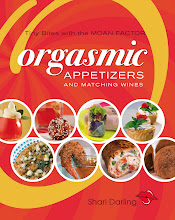
While the new buzzword ‘sustainability’ is said to have as many as 85 meanings, it has a specific meaning within the wine industry. Sustainability is the growingof grapes and the producing of wine in a way that protects the environment and conserves natural resources where possible. Sustainability also ensures the long-term viability of the vineyards for generations to come. This philosophy includes social responsibility, as well, which means wine producers are not only aware, but are sensitive to the concerns and needs of those living within wine country. Sustainability, while considered a conscious approach to wine production, also embraces the entrepreneurial spirit to succeed in a competitive international wine market.
These practices include monitoring the health of the soil, water conservation and quality; pest control; grape and wine quality; ecosystem management; energy efficiency; resource renewability and solid waste reduction.
Flat Rock Cellars in Niagara is Ontario’s first wineries to be committed to sustainability from the onset, from the moment it opened its doors in April, 2005 to today.
Flat Rock is owned and operated by Ed Madronich, who used to head up the marketing department of Inniskillin Wines at Vincor Inc., the 6th larges wine corporation in North America. In his 30’s, Ed represents Ontario’s newest, leading edge breed of winery owners committed to making excellent wines, all the while sustaining the environment.
Ed is diligent about fitting into rather than dominating or destroying the natural ecosystem of the environment. For example, he built the winery around the natural rock, rather than blasting through it -- hence the name of the winery.
Flat Rock is one of the only wineries in Ontario prepared to implement major sustainable practices to create a solid foundation that is environmentally sound, socially responsible and economically viable. This includes the use of a gemo-thermal system that uses only 20% of the energy to cool the fermentation tanks during fermentation. This system burns no fossil fuels or freon, either.
Flat Rock also treats 100% of its own waste water through an on-site bio-filter system approved by the Ministry of the Environment, which is presently a major expense for Ontario’s large, commercial wineries. Their ozone machine also disinfects the oak barrels without the use of any chemicals.
To prevent bruising, the grapes are handpicked, placed in individual baskets and carried to the winery where 15% of the fruit is sorted out. (Often handpicked grapes are placed into larger baskets at the end of every vine row. Larger baskets hold too many berries and cause pressure on the bottoms ones, thereby bruising and crushing them unnecessarily.) This low impact or non-interventionist philosophy also includes the use of both wild and cultured yeasts during fermentation, whole cluster fermentations and minimal racking to ensure the distinctiveness and quality of the wines.
Flat Rock wines are available through the LCBO. However, it’s worth the drive to Niagara to discover this leading edge winery. It is set on the Niagara Escarpment, encased in a glass building and overlooking rolling vineyards with the Toronto skyline on the horizon.
Flat Rock is renowed for producing outstanding Pinot Noir, along with Chardonnay and Riesling. The Rieslings are some of the best I’ve ever tasted out of Niagara. They are luscious and rich with ripe, juicy tangerine fruit. This is a different profile for Riesling from Niagara, which often displays more grapefruit flavours.










